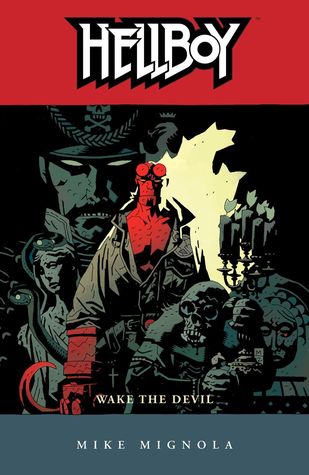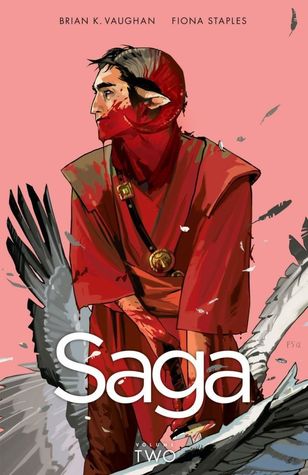
When I spotted this book at the Newtown Library annual book sale in the summer of 2017, I was psyched. Here was a chance to read some old favorites and discover other stories that I hadn't read before. I likened it to picking up an album by a band who you only knew by their greatest hits but wanted to dive deeper into their discography. So when October rolled around last year, it seemed the perfect time to re-visit Poe.
This collection kicks off with "The Tell-Tale Heart," probably Poe's most famous work. It's followed by "The Black Cat," which I'd never read before, and I was surprised by its graphic nature. My all-time favorite Poe story, "The Cask of Amontillado," followed, and my opinion of it was untarnished. "The Fall of the House of Usher" and "The Masque of the Red Death" completed the set of familiar hits. Now I was to enter the area of the unfamiliar. While I'd heard of a couple others in the collection, I hadn't had a chance to read them.
I don't want to bore you with analysis of each story, so I will summarize my disappointment.
Poe is credited with creating the first modern detective stories, beating out Sir Arthur Conan Doyle's Sherlock Holmes by over forty years. "The Murders in the Rue Morgue" and "The Purloined Letter" were two of the mysteries included here. Unfortunately, they were all
"tell" and no "show." We have to endure a blowhard detective lording over anyone who will listen how he solved the case. The stories are all "reveal." It would've been far more enjoyable to experience the stories as the detective discovered clues. Doyle and Christie would eventually figure out how to do it right.
A few of the stories were treated as fictional testimonials whereupon the narrator related some strange incident or horrifying experience. I think the hook here was to ensnare gullible readers of Poe's time to believe these sensational accounts were really true, maybe drive up newspaper sales. While the events and particulars would change, the stories shared the same structure and struck me as formulaic. And the purple prose! It got to the point where it was so cloying, so thick, that I had to take breaks from it. I could scarcely finish a page without suffocating from its soporific embellishment into a slumber so deep that only the vigorous applause of Conan's studio audience emanating from the television speaker could rouse me.
Sorry. Got a bit carried away there. Apparently purple prose is contagious. Anyway, Lovecraft would later go on to master these techniques, though now I'm worried that I might no longer enjoy
his work.
The collection of stories ends with "The Narrative of Arthur Gordon Pym," which embodies all of my objections. It's 161 pages of Mr. Pym's epic sea voyage. It starts as a drunken kidnapping then turns into a shipwreck. Apparitions, sharks, and cannibalism all make an appearance. But after Mr. Pym is rescued, he doesn't return home, but instead journeys with the rescuing ship south. Now at this time, there was still some uncertainty about the existence of Antarctica as a continent, so Poe took advantage of that to do some
Hollow Earth extrapolation. And the abrupt ending is neither mysterious nor satisfying.
From here, the collection moves on to Poe's poetry. While a good deal of it is adequate, "The Raven" is his true masterpiece and stands head and shoulders above the rest in not only subject matter, but form and execution.
Ultimately, it took me a year to get through this collection. I'm embarrassed that it took so long. What started out as a promising journey through literary nostalgia took a horrible turn into musty, archaic manuscripts that—Crap! I'm doing it again. [Sigh] So I'm left with giving this collection just three stars. Before you hate on me, I'll admit that it's me, not him. While there are plenty who still appreciate his style, I think my preferences are now too modern. Maybe Poe is now someone who should only be read in small doses—a story here, a story there—and to be appreciated every Halloween.
\_/
DED
 Volume 2 picks up where volume 1 left off. Defrosted WW2 Nazis are striving to build their "vampir sturm" army, but they need resources to build it and Vladimir Giurescu to finish the job. While the resource problem is quickly solved, ol' Vlad's been dead since the war and his body is hard to find. A year later, Hellboy and his fellow field agents from the Bureau of Paranormal Research and Defense (I didn't realize it was located so close to home. I should see if they're hiring.) are sent to Romania to investigate.
Volume 2 picks up where volume 1 left off. Defrosted WW2 Nazis are striving to build their "vampir sturm" army, but they need resources to build it and Vladimir Giurescu to finish the job. While the resource problem is quickly solved, ol' Vlad's been dead since the war and his body is hard to find. A year later, Hellboy and his fellow field agents from the Bureau of Paranormal Research and Defense (I didn't realize it was located so close to home. I should see if they're hiring.) are sent to Romania to investigate.
 So volume two left off with a bit of a cliffhanger. Rather than pick right up where they left off, Vaughn and Staples rewind a few days to show our heroes arriving on Quietus to meet the author of the novel that sparked their relationship. There's a bit of exploration on how people cope with loss. Some depth is added to Marko's mom.
So volume two left off with a bit of a cliffhanger. Rather than pick right up where they left off, Vaughn and Staples rewind a few days to show our heroes arriving on Quietus to meet the author of the novel that sparked their relationship. There's a bit of exploration on how people cope with loss. Some depth is added to Marko's mom.
 When I spotted this book at the Newtown Library annual book sale in the summer of 2017, I was psyched. Here was a chance to read some old favorites and discover other stories that I hadn't read before. I likened it to picking up an album by a band who you only knew by their greatest hits but wanted to dive deeper into their discography. So when October rolled around last year, it seemed the perfect time to re-visit Poe.
When I spotted this book at the Newtown Library annual book sale in the summer of 2017, I was psyched. Here was a chance to read some old favorites and discover other stories that I hadn't read before. I likened it to picking up an album by a band who you only knew by their greatest hits but wanted to dive deeper into their discography. So when October rolled around last year, it seemed the perfect time to re-visit Poe.
 Persepolis: The Story of a Childhood is a graphic memoir (a memoir in graphic novel form) of Marjane Satrapi's childhood years in Tehran, Iran during the late 70s and early 80s. Those old enough to remember—or know their history—will recall that this is the time when the Shah was evicted from Iran and a religious dictatorship took his place, the American embassy was captured and 52 people were held hostage for over a year, and Iran went to war with Iraq. I'm about Satrapi's age, so I recall those events (from a safe distance) and coming to believe that Iran was ground zero for chaos in the Middle East and the bastion of "Death to America!" sentiment. Persepolis is Marjane Satrapi's attempt to relate what living there was like.
Persepolis: The Story of a Childhood is a graphic memoir (a memoir in graphic novel form) of Marjane Satrapi's childhood years in Tehran, Iran during the late 70s and early 80s. Those old enough to remember—or know their history—will recall that this is the time when the Shah was evicted from Iran and a religious dictatorship took his place, the American embassy was captured and 52 people were held hostage for over a year, and Iran went to war with Iraq. I'm about Satrapi's age, so I recall those events (from a safe distance) and coming to believe that Iran was ground zero for chaos in the Middle East and the bastion of "Death to America!" sentiment. Persepolis is Marjane Satrapi's attempt to relate what living there was like.
 So if you haven't read volume 1, this review could be a bit spoiler-ish.
So if you haven't read volume 1, this review could be a bit spoiler-ish.